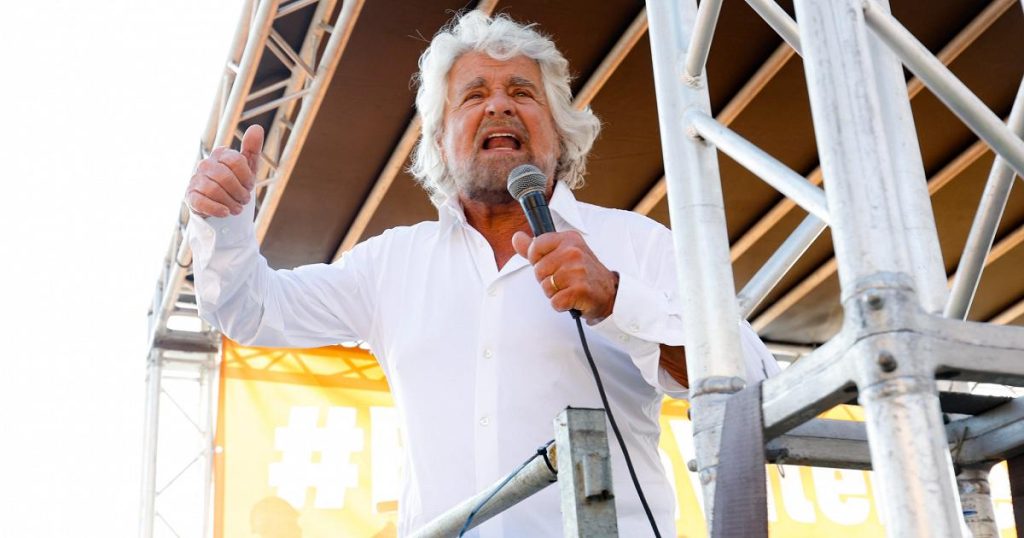In a recent blog post, Beppe Grillo, a key figure in the Movimento 5 Stelle (M5S), outlined what he considers to be the three fundamental pillars of the movement: its symbol, name, and the rule regarding second terms in office. Grillo, who identifies himself as the guardian of the core values of M5S, emphasized that these pillars are non-negotiable and cannot be altered at will. This statement came in response to Giuseppe Conte’s announcement of a Constituent Assembly for M5S, to be held on October 4th, aimed at revitalizing the movement following its disappointing performance in the recent European elections.
Grillo highlighted the symbolic importance of the M5S name and logo, stating that they represent a commitment to change and a rejection of traditional politics. He stressed that altering the name or logo would signify a departure from the movement’s original ideals and the trust of its supporters. Furthermore, Grillo underlined the significance of the rule concerning second terms, which he believes distinguishes M5S from conventional political parties by prioritizing service to citizens over personal ambitions. These pillars, according to Grillo, are the essence of M5S and must be safeguarded to preserve the movement’s integrity and credibility as a vehicle for genuine change.
In response to Grillo’s rigid stance, Giuseppe Conte initiated the formal process of establishing the party, emphasizing that all issues will be open for discussion within the movement’s membership of 160,000 to 170,000 individuals. Conte rejected the idea of a select few making unilateral decisions and pledged to involve all members in shaping the movement’s direction and policies. The upcoming Constituent Assembly, scheduled for October, represents a pivotal moment for M5S, as it seeks to address internal divisions and redefine its political priorities and strategies in light of recent challenges.
Grillo’s post reflects a uncompromising approach that may clash with certain members of M5S who advocate for adaptation and evolution within the movement. Conte’s supporters view Grillo’s stance as a sign of weakness, particularly in light of his exclusion from the decision to convene the Constituent Assembly. Conte, in turn, reaffirmed his commitment to a bottom-up approach, where the members will lead the discussion and decision-making processes. He emphasized the importance of inclusivity and democratic participation in shaping the future direction of M5S, distancing himself from top-down decision-making processes.
The ongoing dispute between Grillo and Conte signals a broader debate within M5S regarding its identity and future trajectory. As the movement prepares for the Constituent Assembly, discussions around leadership, strategic positioning, and relationships with other political forces will come to the fore. Conte views the assembly as an opportunity for renewal and revitalization, acknowledging the need for M5S to adapt and reinvigorate its political platform in order to remain relevant and effective in the evolving political landscape. Ultimately, the outcome of this internal debate will shape the future direction of M5S and its role in Italian politics.


